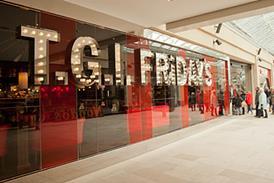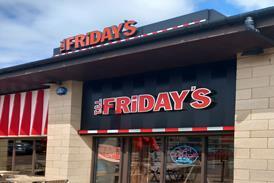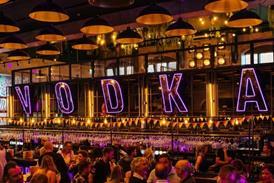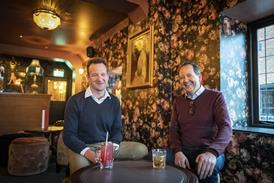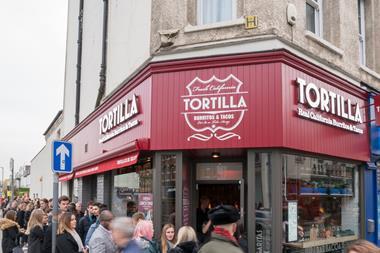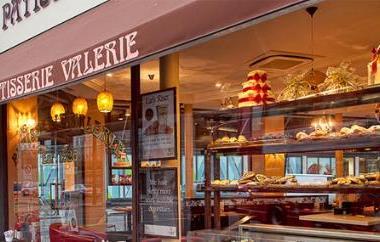In its latest Consumer Review study, Deloitte looked at the challenges businesses face in delivering a positive customer experience. The study focused in particular on customer loyalty and why it believes traditional loyalty schemes need a rethink. Securing customers’ loyalty goes beyond having a loyalty programme argues Deloitte’s Ben Perkins and Nick Turner
Loyalty is a brand’s ability to be ‘top of mind’ in a customer’s head as well as to secure a sense of allegiance from consumers. Allegiance is much harder to achieve at a time when every consumer has different expec-tations and responds to different triggers when it comes to engaging with a brand.
Getting the customer ‘experience’ right has become the differentiating factor for many successful business models. And the right loyalty strategy should help to deliver that experience.
Reinventing a ‘tired’ concept
According to our research, while participation rates to loyalty schemes are high, the majority of consumers consider being rewarded for their loyalty as the norm, not a differentiator.
The data shows that one in two consumers is a regular user of loyalty schemes, making use of a brand loyalty scheme at least once a month or more often. Moreover, while 54% claims to like points-based loyalty schemes, a similar share of consumers do not always redeem all their points (53%). When asked about their attitude to loyalty schemes, 42% indicated they needed more than points to shop with a brand.
Sir Terry Leahy once said: “The true source of loyalty is to create benefits for people… Sometimes people concentrate too much on devices like a loyalty card.” This state-ment demonstrates the need for schemes to evolve with changing consumer expectations.
Securing customer loyalty
Beyond value for money, trust, quality, convenience and customer service, respondents regarded the key reasons for being loyal to a brand, were overall shopping experience (27%), as well as a brand’s customer loyalty scheme (26%). Previous research has also shown that more than 50% of consumers say that the overall enjoyment of their ex-perience is important in their decision to buy a product or service.
Loyalty should be about more than just collecting points. Loyalty programmes lose their significance when they are surrounded by similar schemes. On average, people are enrolled in 14.3 loyalty programmes, ac-cording to a recent report from Bond Brand Loyalty. Many of the current schemes just reward normal behaviour or routine, not loyalty.
Customer loyalty is often tied to routine, so any innovation that simplifies a routine while enhancing the customer experience is a reward in itself. It is very likely that customers will remember their experience with a brand long after they have forgotten receiving a discount.
Reward programmes: Winning and retaining customers in the digital era
Our research shows that consumers want to be recognised and rewarded as individuals, not as nameless, faceless point collec-tors. Consumers want to be rewarded based on their personal tastes and expect brands to be more relevant in the way they engage with them.
According to our research, personalisation and relevance are even more important to 18 to 24-year-olds than to the rest of the population. And while this group is more likely to enjoy a points-based loyalty scheme they are less likely to redeem the points. This might reflect the fact that the most popular loyalty schemes are older than many of the Millennials and were designed for previous generations.
The power of ‘next-best-action’ analytics and machine learning have enabled more relevant and personalised one-to-one communications with the customer. Businesses that have adopted these tools are the ones that will thrive in this ever-changing loyalty landscape.
In the digital era, it is important that loyalty schemes give consumers some control over curating and selecting the rewards programmes and level of interactions they have with a brand. Brands that build loyalty programmes collaboratively with their customers can lower the risks and increase their chances of success.
Capitalising on new technologies to improve the customer experience
Consumers in the digital era are fickle and securing a share of both their ‘hearts and minds’ is a key challenge for businesses. Technology has encouraged them to shop around more. The digital revolution has transformed loyalty from the basic concept of a customer repeating purchases with the same brand and being tangibly rewarded to something less tangible.
Research shows that today’s customers will be more loyal to ‘experiences’ than to brands, products or companies. Technology can provide solutions to this shift in the nature of loyalty by offering more relevant customer experiences.
Deloitte research shows that while 43% of people do not know what technologies would make them more loyal, those who do (around a quarter) want technologies that allow more personalisation, friction-less experiences, customisation and curation. This is particularly true among 18 to 24-year-olds, who are also more likely to use technologies to engage with a brand.
Technology-based solutions that could enhance the customer experience include software that can write cognitive content, apps that leverage smartphone capabilities to add value, and functions such as OmniCart that bridge the gap between in-store and on-line shopping experiences for customers.
Businesses need to adapt to the digital age by adopting agile and flexible solutions that will allow them to realign their customer experience programme to constantly changing customer expectations and needs.
This has become even more important given the exponential growth in start-up and technology-led competitors eager to fill any gap they spot in the market. With every new business model offering a better experience, consumers’ expectations mount as does the pressure on traditional businesses to adapt and transform their business models.
The financial liability of traditional loyalty schemes
Loyalty programme innovation can be risky and expensive, whether because of cost, fear of alienating the current membership base or doing it inefficiently. However, investment in loyalty initiatives is on the increase. New roles at the executive level are being created with chief customer officer (CCO) and chief data officer (CDO) positions emerging in many businesses. Yet most businesses do not realise the true cost of traditional loyalty schemes.
According to our research, only about half of consumers (47%) always redeem all their points and take advantage of all the offers they receive through loyalty schemes; these outstanding redemption costs on a business’s balance sheet can be difficult to manage. The figure is even lower among the younger age group (40%). Points-based programmes have not only become so commoditised that it is getting harder to drive participation, they are also difficult to unwind.
Given these risks and the lower return on investment in using a third party scheme, businesses need to build more internal loyalty capabilities that focus on experiences rather than points, giving them greater control and flexibility.
However, newer experience-based schemes can be difficult to operate at a sufficient scale, the payback can be hard to measure and the value exchange between customers and brands opaque. Considering these challenges will also be critical in implementing a successful loyalty programme.
Custom-built vs off-the-shelf
With the speed of change accelerating in both technologies and customer expectations, the best approach businesses can adopt is to design a flexible loyalty ecosystem. However, one question still remains: should businesses invest in building their own solutions or in buying off-the-shelf technologies and system integrators.
Given how important an asset data has become, businesses are increasingly wanting to own and control their loyalty scheme. More and more businesses employ data scientists, engineers and product owners to customise their loyalty initiatives to reflect their customer preferences and align their programmes to their brand proposition. As a result businesses can enhance their loyalty schemes exponentially rather than through more traditional incremental changes.
The need to be agile
Many businesses run large customer relationship management programmes (CRMs), but on costly legacy systems that are not sufficiently agile to deal with rapidly changing customer expectations. Businesses should be developing their own solutions using open-source software like Python and data scientists to develop algorithms that accelerate releases to customers.
Businesses that are customising existing technologies and building their own solutions are not only gaining greater control over their data, they are also more agile in offering a better customer experience and can release programme improvements on a two-to-four-week basis.
Online-first retailers have led the way in providing customers with experience-based, relevant and personalised rewards programmes but the majority of businesses have not yet developed the necessary analytical capabilities to do so.
While we have examined a number of viewpoints in this report, it is clear businesses have an opportunity to redefine their loyalty strategy and enhance their customer experience as a result.
■ Ben Perkins is head of consumer business research and Nick Turner is a partner at financial advisory company Deloitte


